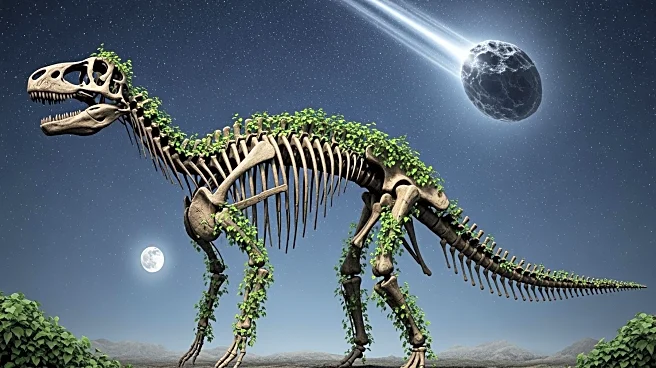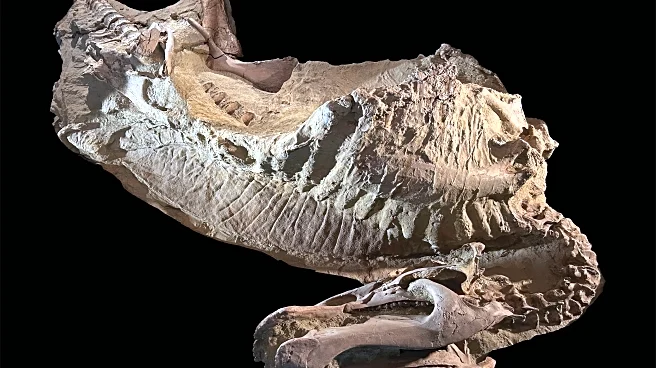What's Happening?
A recent study has provided new insights into the state of dinosaur ecosystems just before the asteroid impact that ended the Cretaceous period. The research, based on argon dating of strata from the Naashoibito Member in New Mexico, suggests that dinosaurs
were flourishing up until the catastrophic event. This challenges previous beliefs that dinosaur ecosystems were in decline due to reduced species diversity. The study compares fossil records from the Hell Creek Formation in Wyoming, known for its rich deposits from the last days of non-avian dinosaurs, with those from New Mexico. The findings indicate that the ecosystems in these regions were contemporaneous, suggesting that the diversity observed in Hell Creek might not have been an isolated case.
Why It's Important?
This study is significant as it reshapes the understanding of dinosaur extinction, suggesting that the asteroid impact was the primary cause rather than a gradual decline in diversity. This has implications for paleontology, as it challenges the narrative of a slow decline and highlights the suddenness of the extinction event. The findings could influence how scientists interpret fossil records and understand the resilience and adaptability of ecosystems facing catastrophic events. It also underscores the importance of regional studies in providing a more comprehensive picture of historical biodiversity.
What's Next?
Further research is likely to focus on expanding the fossil record from other regions to confirm whether the patterns observed in Hell Creek and New Mexico were indeed global. This could involve more detailed stratigraphic studies and advanced dating techniques to refine the timeline of the extinction event. Additionally, scientists may explore the role of volcanic activity and other environmental factors that coincided with the asteroid impact to better understand their combined effects on global ecosystems.
Beyond the Headlines
The study raises questions about the adaptability of species to rapid environmental changes and the potential for sudden extinction events in the current era of climate change. It also highlights the need for interdisciplinary approaches in paleontology, combining geology, biology, and climate science to reconstruct past ecosystems accurately.















